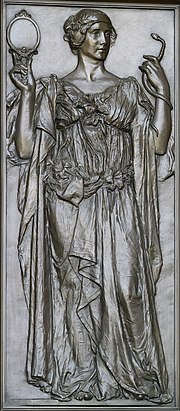
So just a couple days after I blogged about using characters as moral centers in fiction, I was brushing my teeth (Have you noticed that all epiphanies come during personal hygiene moments?), and I thought, What on earth were you talking about? Not that I suddenly dislike using characters as moral centers, but I realized that the character I'd been thinking about using as a moral center wasn't going to work at all. In the back of my brain, I guess I've kind of known she wasn't supposed to be that sort of character for a while now.
There are several reasons the character I had in mind can't be my moral center--most too difficult to explain here. But I think it can't be a coincidence that most of the characters who fulfil the role of moral center in literature are generally secondary characters (a notable exception would be Atticus Finch from To Kill a Mockingbird, but we see him through the memories of his daughter, Scout, so there's still a bit of distance between him and the reader). Moral centers may have amazing personal histories, but generally, they just pop in and pop out of the story as needed: like an occasional angelic visitation. Somehow, the more you know about a person's past, the harder it is to accept his or her moral authority. (Jesus' problem when he went back to his hometown of Nazareth. "Look who's the big shot now. Ha! I used to change his diapers!")
It's the skillful writer who can create believable moral authority in a well-detailed character. An example of this might be Bishop Myriel in Victor Hugo's Les Miserables. The Bishop may still technically be a secondary character (Hugo's "brief" character sketches are chapters long), but before his scene with the protagonist, Jean Valjean, the reader already knows how many chairs the Bishop has in his house, that he is generous to a fault, the sort of notes he makes in the margins of his books, his thoughts on politics, and that he has given up his house for use as a hospital. This not only makes the later scene with the candlesticks believable, but somehow the sincerity of the Bishop's portrayal allows the reader to accept the sincerity of the change he triggers in Valjean.
Even the best writers seem to struggle with using a moral center as a primary character. A few months ago, I tackled The Brothers Karamazov. The young novice Alyosha is obviously Dostoevsky's moral center, and the reader gets to spend a good deal of time with him. Dostoevsky wrote some marvelous scenes with Alyosha, but after a while, Alyosha's goodness becomes annoyingly dull. I tired of following him because there was little question about how Alyosha would respond to situations.
I'm still trying to decide what I'm going to do in my novel. Since I'm playing with multiple narrations, I actually have a choice to make with each storyline, which is both exciting and scary. I realized that in at least one of my storylines I already have an obvious moral center character who I've been ignoring. I may do something completely different with my other storylines. Of course, the acceptance of a character (moral center or not) as "believable" depends on the specific reader, but right now I'd be happy if I could just please the writer.
Side Note: The image above is Olin Levi Warner's Truth with a mirror and serpent from the Library of Congress because... well, just because I got tired of searching for images in the public domain.
Interesting. You remind us of "On Stepping Into the Shower".
ReplyDeleteI've begun Les Miserables, and Bishop Myriel is my favorite character! He almost converted me! I loved reading about his generosity, rarely seen among humans but yet truly believable. A true saint. I thought to myself, if the bishop can live like that, I want to live like that.
Hey, thanks for commenting!
ReplyDeleteLes Miserables is a great book--huge with a lot of digressions, but great.